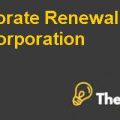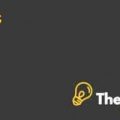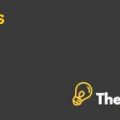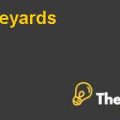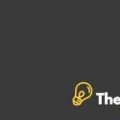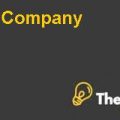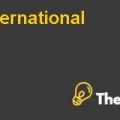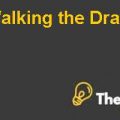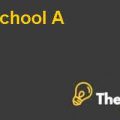
Introduction
This paper attempts to perform a detailed analysis for a real estate investment. The company that is planning for this investment is Strip Center Properties and it plans to purchase the five bay retail strip center for a total asking price of about $ 900,000. In order to evaluate the property, the detailed capitalization rate analysis and the DCF analysis has been performed to estimate the true value of the property in comparison for the asking price.
QQD Framework
First of all, in order to evaluate the strength of this property the QDD framework has been applied. Under this framework, the quality of the property’s cash flows, and the quantity of the property’s cash flows and the durability of its cash flows have been analyzed as follows:
Quality
First of all if we define a retail strip center then it could be considered as a row of service and retail outlets which are basically managed in the combined form of a coherent retail entity. Furthermore, there is on-site parking also provided in front of those stores. The parking might be in a straight form or in the form of an L or U shape. All the tenants that are going to lease the properties in those areas which means they are going to lease the stores will be providing their services and goods to all the people living in the local neighborhood.
If we talk about the quality of the cash flows, then it could be seen from the detailed calculations that have been performed in the spreadsheet then it could be seen that the investors of the property would be able to generate significant returns from the property. However, there would be a lot of uncertainty also involved such as the uncertainty related to the use of the land in the future and this might be a cause of concern for the tenants and this makes the evaluation of the financial condition of the tenants more important.
Those tenants that would be getting the opportunity to expand their business operations because of improving financial condition would not increase the risk that these tenants would be not renewing their lease in the given property in which they have invested. However, there is also a risk that one of the existing tenants of the company fins another suitable location in the market to lease it and start his operations. Therefore, it is necessary for the investors to look at the trend of the financial condition of their tenants and meet up the requirements related to empty industrial space.
Overall, the new property seems to be a good place for business opportunity and investment. Furthermore, it is going to provide all the tenants with an opportunity to expand their operations and improve their financial conditions, therefore, it could be said that the quality of this property is high.
Quantity
Secondly, if we talk about the strength of the property cash flows in terms of the quantity of the cash flows then it seems that this property is going to generate some good returns for their investors. If we look at the spreadsheet calculations in the DCF analysis sheet then it could be seen that the debt coverage ratio over the investment period of 10 years is increasing each year starting with 1.34 times in year 1. This shows that the property would be generating enough cash flows from its operations that would be sufficient to finance the $ 800,000 loan that would be borrowed from the bank to purchase this property.
Furthermore, the investors of the property have set an asking price for the property of $ 900,000 for which they would be seeking $800,000 from the local bank and the remaining $ 100,000 would be invested by the investors in the form of the equity to make the purchase of the strip retail center. If we calculate the return on the injected equity of the investors in the form of BTIRR, then it could be seen that the return generated by the equity investors is around 41.15% which is a good return.Retail Case Study Case Solution
At the end of year 10, the terminal capitalization rate has been also assumed to be equal to the calculated capitalization rate for the DCF analysis of the property. Based on the terminal capitalization rate, the terminal value of the property which would equal its sales price at the end of the year has also been calculated. The sales price of the property in present value terms would be around $ 609,946 and the present value of the net operating income over the period of 10 years would be around $ 591,088..............
This is just a sample partial case solution. Please place the order on the website to order your own originally done case solution.

